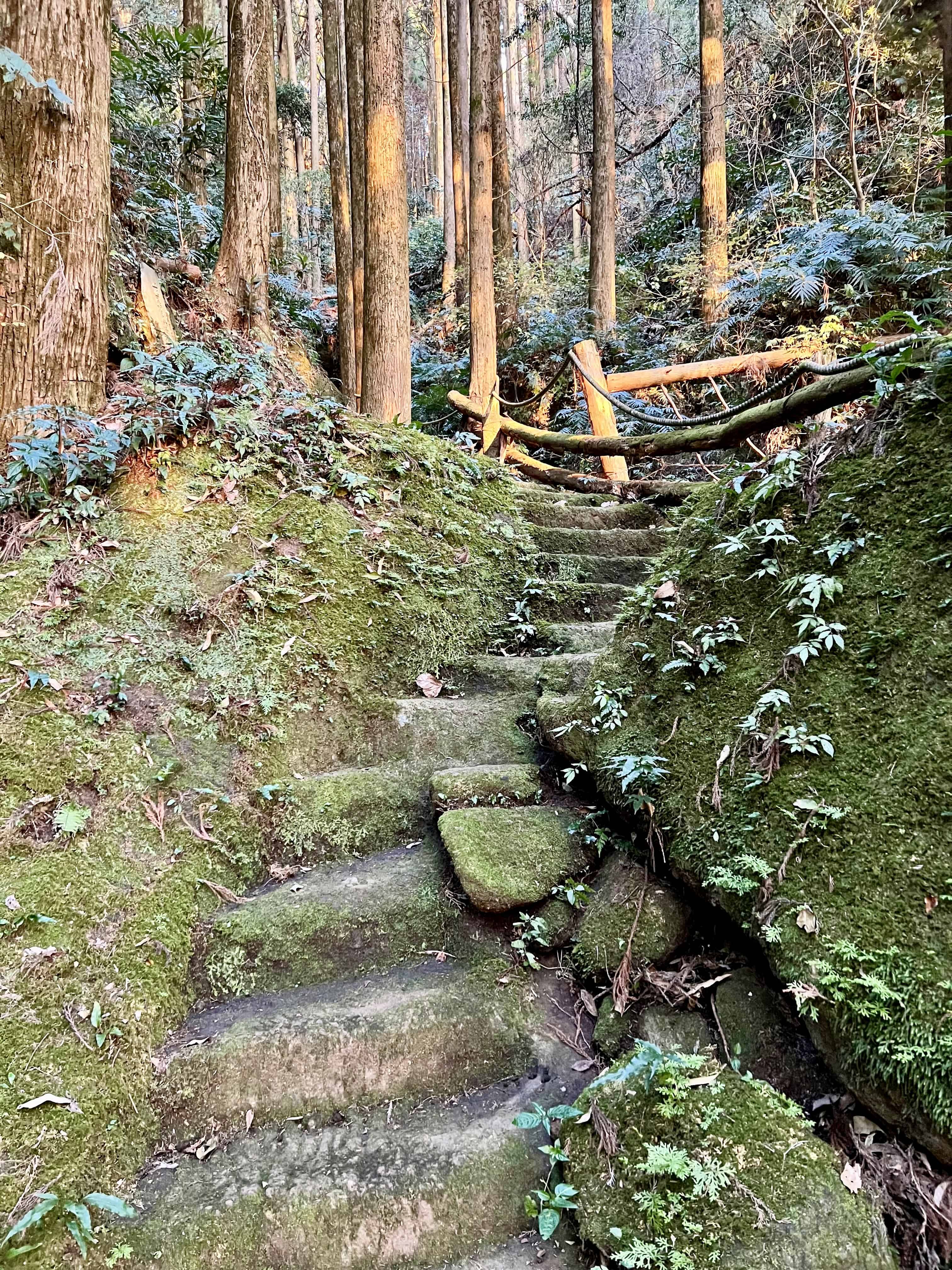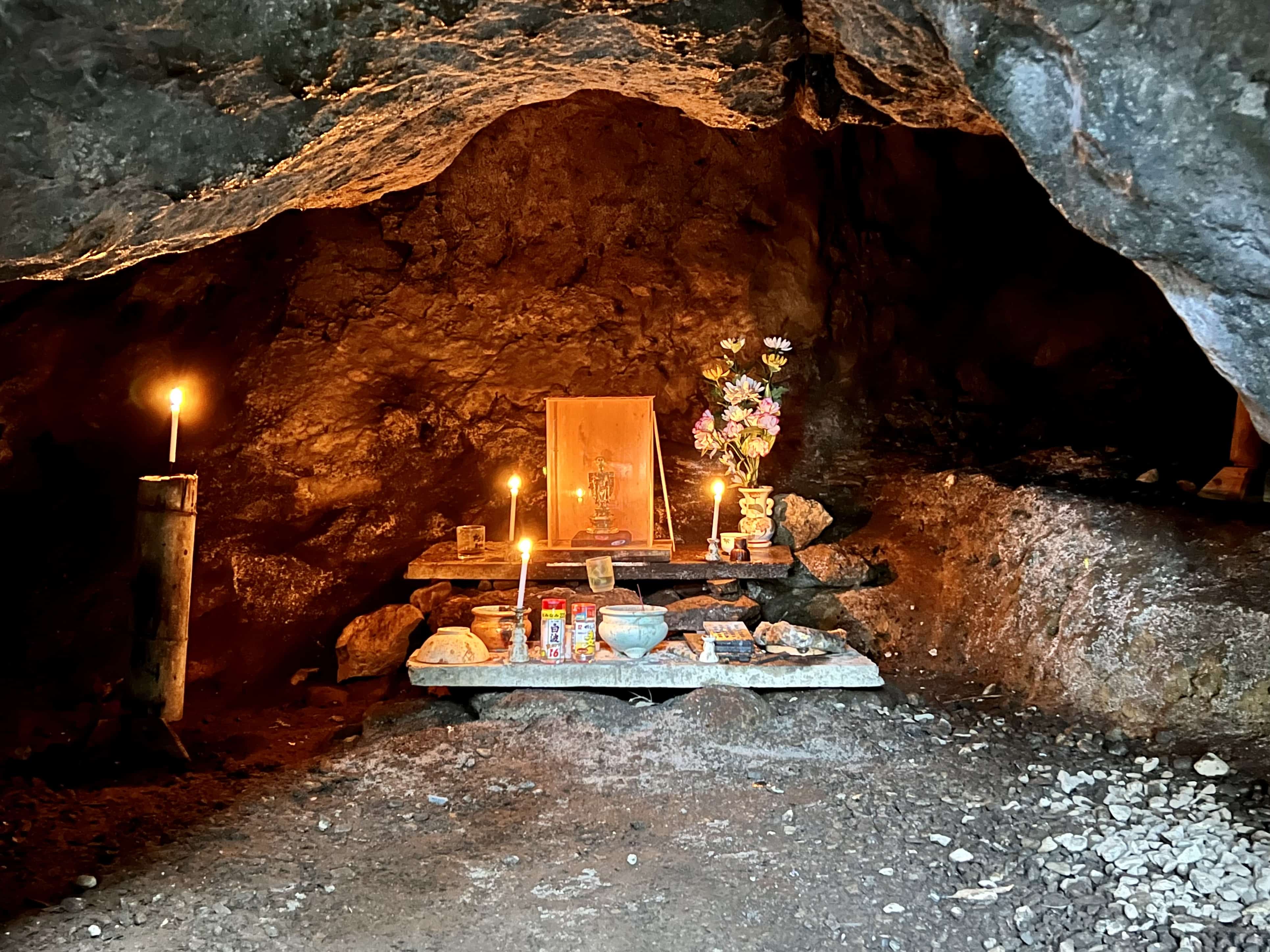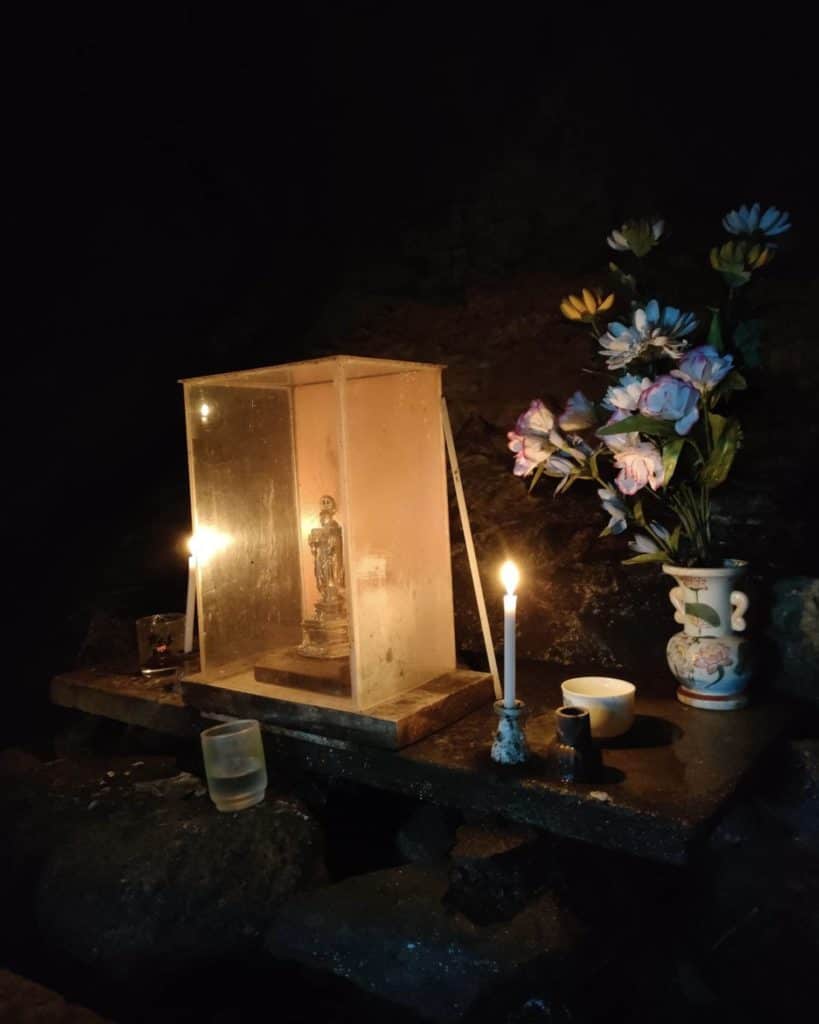For more than 300 years, belief in Jōdo Shinshū Buddhism was punishable by death

Kakure Nenbutsu
For many years, believers in Jōdo Shinshū Buddhism, the True Pure Land sect, quietly climbed into the deep recesses of remote mountains to pray in hidden caves where their images and other ritual items were safely stored. If caught, these believers faced torture and death. They were known as Kakure Nenbutsu, 隠れ念仏, Hidden Buddhists.
Kakure Nenbutsu refers to the believers themselves, their associations, and the action of hiding their beliefs from the authorities.
History of the Kakure Nenbutsu
Jōdo Shinshū Buddhism was founded in the 13th century by, Shinran, who had been trained at the Tendai Buddhist stronghold on Mount Hiei, northeast of Kyoto. He later broke with Tendai and started his own sect based on the understanding that all people, regardless of position or status, were equal in the eyes of Amida Nyorai. All people were equally worthy of salvation.
All living beings are equally precious before Amida Nyorai.
Jōdo Shinshū TENANT
In the 15th century, the priest Rennyo codified the beliefs of Jōdo Shinshū and his writings were disseminated throughout the country. They were eagerly received by downtrodden peasants, merchants, and even some local lords. As believers grew in numbers, a radicalized and powerful group called the Ikko-Ikki developed.
Ikko-Ikki groups of farmers, local samurai, and monks fought to overthrow their daimyos, or feudal lords. Ikko-Ikki uprisings occurred throughout the country, and in 1488, more than a hundred thousand Ikko-Ikki rose in revolt, took over the Kaga domain, and set up their own Peasants Kingdom.
Daimyo across the country took note.
Down in southern Kyushu, the influential lord of Satsuma (Kagoshima), Shimadzu Tadayoshi, was devout to both Zen Buddhism and Confucianism. He penned the Iroha Uta, 47 short poems that conveyed the principles of Confucianism and were the bedrock of Samurai schooling in his domain.
Tadayoshi despised the zealous Jōdo Shinshū and their violent Ikko-Ikki fanatics. He felt nothing but disdain for their disregard for loyalty to their lords, a crucial Confucian principle.
Following the lead of other notable daimyos, in 1597, Tadayoshi’s grandson, the 17th Lord of Satsuma, Shimadzu Yoshihiro, officially outlawed Jōdo Shinshū in his domain.

Edo-era oppression
During the Edo era (1603-1867), every person was required to register at their local Buddhist temple. This served the dual purpose of keeping track of everyone and also ensuring that there were no Christians among the populace. Anyone suspected of being a Christian was ordered to tread upon an image of Mother Mary or Jesus. If they would not do that, they were killed, often very cruelly.
In Satsuma, the Shimadzu lords determined to not only root out any hidden Christians, but also any believers in the Jōdo Shinshū sect of Buddhism. Every five years, local samurai visited each household to inspect their required “Proof of Religion” tablet, 宗門手札, shūmon tefuda, and to take a census count.
Additionally, groups of five families were organized to keep watch on each other and report any suspicions as to Kakure Nenbutsu or Christians. If their group was known to harbor these outlaws, all would be brutally punished.
Kakure Nenbutsu and Christians alike risked the worst form of punishment, reserved exclusively for them and those who murdered their lords. This was called Ishi-daki, 石抱き, “hugging stone.”
For this brutal form of punishment, the prisoner would be forced to sit seiza, kneeling sitting on one’s feet, upon triangular wedges of wood. Nine centimeter thick planks of stone, 90 centimeters long, 30 centimeters wide, and weighing up to 45 kilos, were placed on the prisoner’s legs one after another. Care was taken to prolong the agony and to take time to show each stone to the prisoner before placing it on his lap. To prevent him from moving, his back and neck were secured to a pole. As if that wasn’t bad enough, the prisoner was also whipped.
Believers in both Christianity and Jōdo Shinshū knew that they risked such torture.
Many Jōdo Shinshū believers secretly fled to the neighboring domain of Obi (southern Miyazaki) where their faith was tolerated. The fleeing peasants were so numerous that the Obi government set up a special magistrate to look after them.
In 1835, the oppression in Satsuma reached its peak when 2,000 Buddhist objects of worship were destroyed and 14,000 Kakure Nenbutsu suffered martyrdom.

This persecution drove believers even deeper into the mountains, into caverns, and aboard ships where they continued their faith. They hid their objects of worship inside wooden pot lids and cutting boards, まな板仏, manaita-butsu; their hanging scrolls inside false umbrellas, 傘仏, kasa-butsu; and their altars inside innocuous wooden boxes.
In the mountains of Hanao, in rural Kagoshima, up a 250-meter climb, one finds a small opening to a cave just 12 square meters in area. Within this low cave, in centuries past, local Kakure Nenbutsu hid their altars and images and, in groups of two or three, went to pray.
Religious freedom at last
Finally, in 1876, the recently established prefectural government of Kagoshima announced “The Freedom of Religion Order,” and the Kakure Nenbutsu and hidden Christians were once again allowed to worship openly.
There are still traces of these hidden Buddhists today. The cave in Hanao is the most accessible, but there are others.
References:
(All are Japanese) kotobank, Nishi Honganji Kagoshima Branch website, Izumi City homepage, signs, etc.
If you have questions about Japan or suggestions for articles, please add them in the comments. For more photos and information on Japan, follow me on instagram at: https://www.instagram.com/more_than_tokyo/




